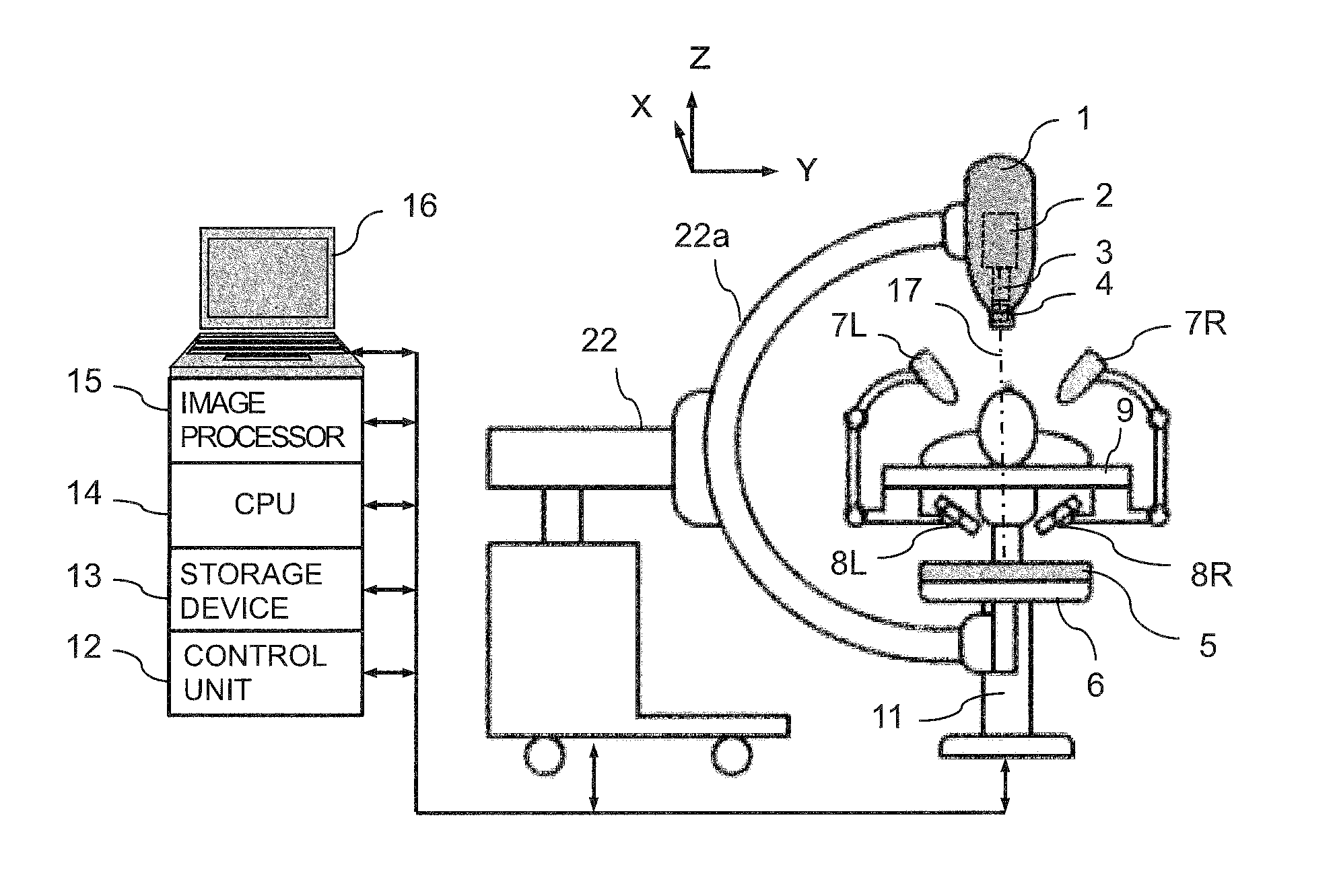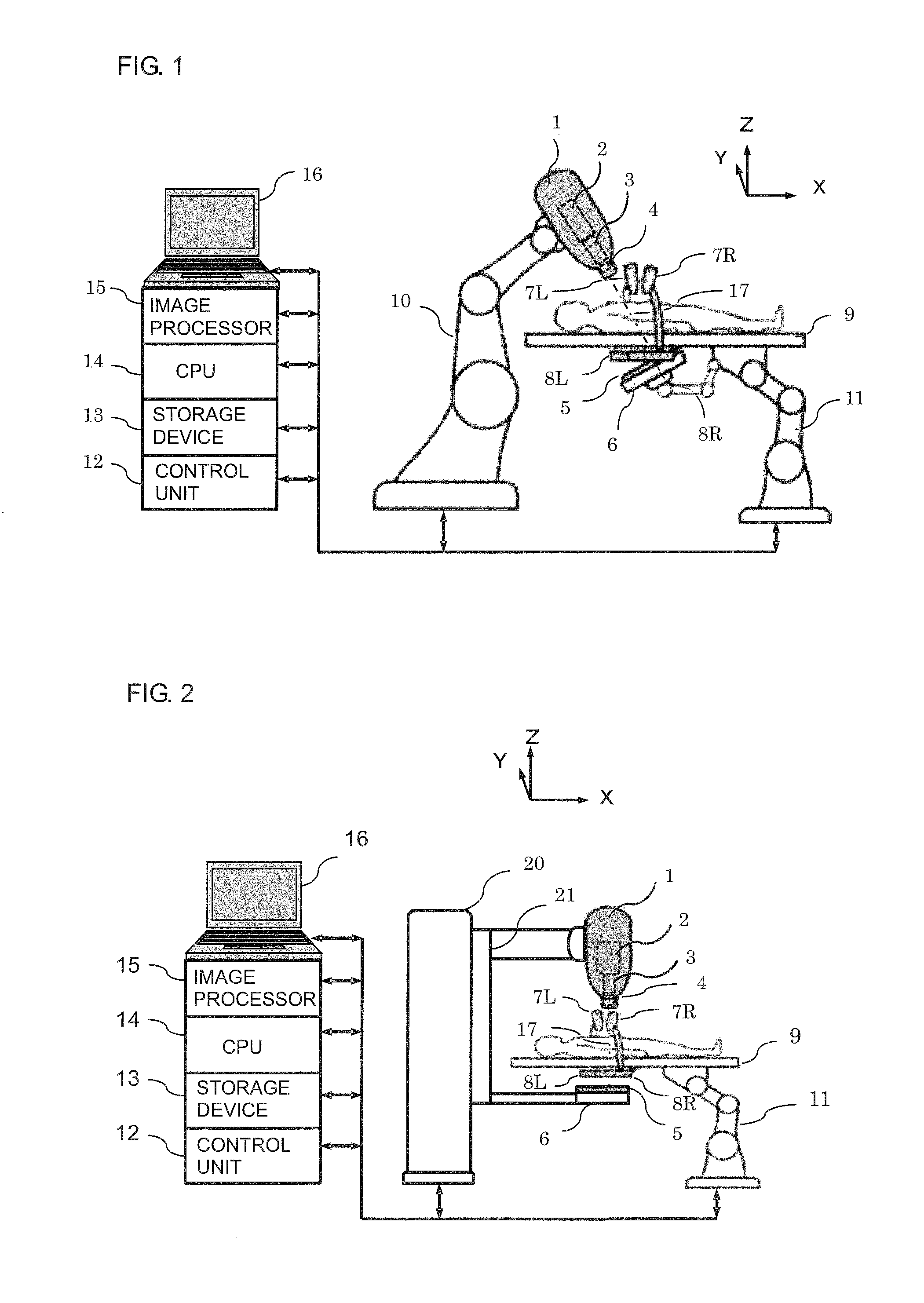Real-Time Three-Dimensional Radiation Therapy Apparatus and Method
a radiation therapy and three-dimensional technology, applied in the direction of material analysis, wave/particle radiation therapy, instruments, etc., can solve the problems of inability to intensively irradiate only tumorous tissue, long treatment time, and poor accuracy, and achieve high degree of accuracy, high speed, and high degree of accuracy
- Summary
- Abstract
- Description
- Claims
- Application Information
AI Technical Summary
Benefits of technology
Problems solved by technology
Method used
Image
Examples
Embodiment Construction
[0041]Embodiments will now be described below in detail with reference to the drawings, in which the same components and functions are denoted by the same reference numerals.
[0042]In describing embodiments illustrated in the drawings, specific terminology is employed for the sake of clarity. However, the disclosure of this patent specification is not intended to be limited to the specific terminology so selected, and it is to be understood that each specific element includes all technical equivalents that have a similar function, operate in a similar manner, and achieve a similar result.
[0043]FIG. 1 is a diagram illustrating a radiation therapy apparatus according to example embodiments. A robot head 1 is supported by an arm-shaped robot 10 of multiple axes (i.e., six or seven axes). The robot head 1 has a therapeutic radiation source 2 that generates therapeutic radiation, a collimator 3 for adjusting the radiation field exposed to radiation, and a first therapeutic radiation detec...
PUM
 Login to View More
Login to View More Abstract
Description
Claims
Application Information
 Login to View More
Login to View More - R&D Engineer
- R&D Manager
- IP Professional
- Industry Leading Data Capabilities
- Powerful AI technology
- Patent DNA Extraction
Browse by: Latest US Patents, China's latest patents, Technical Efficacy Thesaurus, Application Domain, Technology Topic, Popular Technical Reports.
© 2024 PatSnap. All rights reserved.Legal|Privacy policy|Modern Slavery Act Transparency Statement|Sitemap|About US| Contact US: help@patsnap.com










